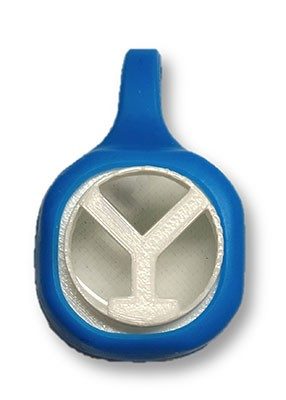FOR IMMEDIATE RELEASE
ACS News Service Weekly PressPac: January 12, 2022
Wearable air sampler assesses personal exposure to SARS-CoV-2
“Development and Application of a Polydimethylsiloxane-Based Passive Air Sampler to Assess Personal Exposure to SARS-CoV-2”
Environmental Science & Technology Letters
Masks, social distancing, proper hygiene and ventilation can help reduce the transmission of COVID-19 in public places, but even with these measures, scientists have detected airborne SARS-CoV-2 in indoor settings. Now, researchers reporting in ACS’ Environmental Science & Technology Letters have developed a passive air sampler clip that can help assess personal exposure to SARS-CoV-2, which could be especially helpful for workers in high-risk settings, such as restaurants or health care facilities.
COVID-19 is primarily transmitted through the inhalation of virus-laden aerosols and respiratory droplets that infected individuals expel by coughing, sneezing, speaking or breathing. Researchers have used active air sampling devices to detect airborne SARS-CoV-2 in indoor settings; however, these monitors are typically large, expensive, non-portable and require electricity. To better understand personal exposures to the virus, Krystal Pollitt and colleagues wanted to develop a small, lightweight, inexpensive and wearable device that doesn’t require a power source.
The researchers developed a wearable passive air sampler, known as the Fresh Air Clip, that continually adsorbs virus-laden aerosols on a polydimethylsiloxane (PDMS) surface. The team tested the air sampler in a rotating drum in which they generated aerosols containing a surrogate virus, a bacteriophage with similar properties to SARS-CoV-2. They detected virus on the PDMS sampler using the polymerase chain reaction (PCR), showing that the device could be used to reliably estimate airborne virus concentrations. Then, the researchers distributed Fresh Air Clips to 62 volunteers, who wore the monitors for five days. PCR analysis of the clips detected SARS-CoV-2 RNA in five of the clips: Four were worn by restaurant servers and one by a homeless shelter staff person. The highest viral loads (more than 100 RNA copies per clip) were detected in two badges from restaurant servers. Although the Fresh Air Clip has not yet been commercialized, these results indicate that it could serve as a semiquantitative screening tool for assessing personal exposure to SARS-CoV-2, as well as help identify high-risk areas for indoor exposure, the researchers say.
The authors acknowledge funding from the National Science Foundation and the Rothberg Fund.
###
The American Chemical Society (ACS) is a nonprofit organization chartered by the U.S. Congress. ACS’ mission is to advance the broader chemistry enterprise and its practitioners for the benefit of Earth and all its people. The Society is a global leader in promoting excellence in science education and providing access to chemistry-related information and research through its multiple research solutions, peer-reviewed journals, scientific conferences, eBooks and weekly news periodical Chemical & Engineering News. ACS journals are among the most cited, most trusted and most read within the scientific literature; however, ACS itself does not conduct chemical research. As a leader in scientific information solutions, its CAS division partners with global innovators to accelerate breakthroughs by curating, connecting and analyzing the world’s scientific knowledge. ACS’ main offices are in Washington, D.C., and Columbus, Ohio.
To automatically receive press releases from the American Chemical Society, contact newsroom@acs.org.
Note: ACS does not conduct research, but publishes and publicizes peer-reviewed scientific studies.
Media Contact
ACS Newsroom
newsroom@acs.org

View larger image

